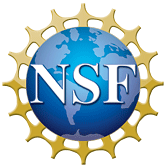A new ocean state after nuclear war
To Access Resource:
Questions? Email Resource Support Contact:
-
opensky@ucar.edu
UCAR/NCAR - Library
| Resource Type | publication |
|---|---|
| Temporal Range Begin | N/A |
| Temporal Range End | N/A |
| Temporal Resolution | N/A |
| Bounding Box North Lat | N/A |
| Bounding Box South Lat | N/A |
| Bounding Box West Long | N/A |
| Bounding Box East Long | N/A |
| Spatial Representation | N/A |
| Spatial Resolution | N/A |
| Related Links |
Related Dataset #1 : Atlantic meridional overturning circulation observed by the RAPID-MOCHA-WBTS (RAPID-Meridional Overturning Circulation and Heatflux Array-Western Boundary Time Series) array at 26N from 2004 to 2018. Related Dataset #2 : WACCM4 150 Tg US-Russia |
| Additional Information | N/A |
| Resource Format |
PDF |
| Standardized Resource Format |
PDF |
| Asset Size | N/A |
| Legal Constraints |
Copyright author(s). This work is licensed under a Creative Commons Attribution-NonCommercial 4.0 International License. |
| Access Constraints |
None |
| Software Implementation Language | N/A |
| Resource Support Name | N/A |
|---|---|
| Resource Support Email | opensky@ucar.edu |
| Resource Support Organization | UCAR/NCAR - Library |
| Distributor | N/A |
| Metadata Contact Name | N/A |
| Metadata Contact Email | opensky@ucar.edu |
| Metadata Contact Organization | UCAR/NCAR - Library |
| Author |
Harrison, C. S. Rohr, T. DuVivier, Alice K. Maroon, E. A. |
|---|---|
| Publisher |
UCAR/NCAR - Library |
| Publication Date | 2022-08-07T00:00:00 |
| Digital Object Identifier (DOI) | Not Assigned |
| Alternate Identifier | N/A |
| Resource Version | N/A |
| Topic Category |
geoscientificInformation |
| Progress | N/A |
| Metadata Date | 2025-07-11T16:00:57.118193 |
| Metadata Record Identifier | edu.ucar.opensky::articles:25567 |
| Metadata Language | eng; USA |
| Suggested Citation | Harrison, C. S., Rohr, T., DuVivier, Alice K., Maroon, E. A., Bachman, Scott, Bardeen, Charles, Coupe, J., Garza, V., Heneghan, R., Lovenduski, N. S., Neubauer, P., Rangel, V., Robock, A., Scherrer, K., Stevenson, S., Toon, O. B.. (2022). A new ocean state after nuclear war. UCAR/NCAR - Library. https://n2t.org/ark:/85065/d7gx4g94. Accessed 01 December 2025. |
Harvest Source
- ISO-19139 ISO-19139 Metadata

